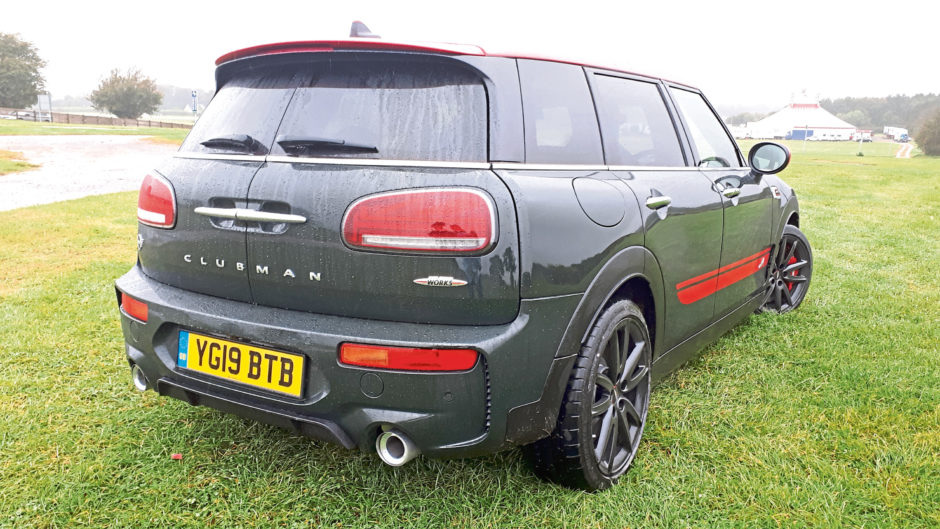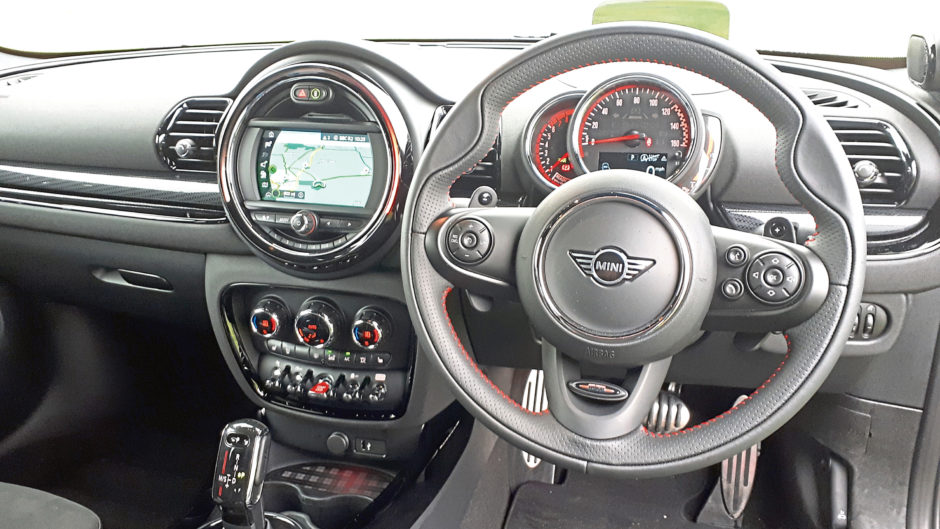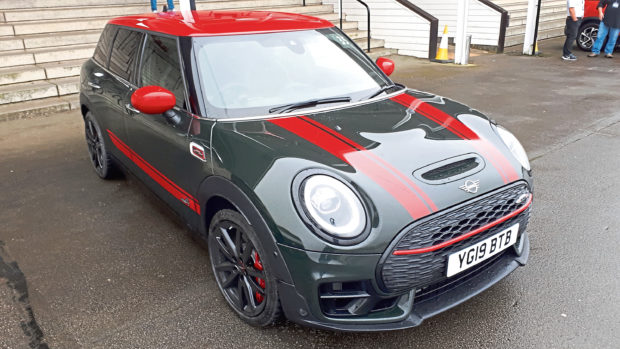Like most people of my vintage, my first car was a Mini.
Surprisingly, it was also one of the few that I made a profit on, even if it was only a couple of quid.
It cost me £90, which frankly was more than it was worth. It was the basic model and had a few ailments, like a dodgy gearbox, a thirst for engine oil which almost exceeded its petrol drink problem, creaking joints and a body that only too clearly showed its years.
All of which is a huge contrast to the latest versions to bear the Mini name. Not only is the current range about half as big again as the original, but as well as a saloon, there’s an estate, convertible and four-wheel drive.
The newest arrival has moved into the performance arena, and what’s remarkable is that the revised Mini Clubman John Cooper Works – a tribute to racing legend John Cooper – has almost a third more power than the model it replaces.

Under the bonnet, the new 2.0 litre, four-cylinder, turbocharged engine, which is what you’ll find in some pretty quick BMWs, offers up an astonishing 300 horsepower in what is still a relatively small car.
What that means is incredible performance, projecting it from a standing start to 62mph in under five seconds – one and a half seconds faster than the outgoing model – up to a top speed limited to 155mph.
To say it is nippy is a gross understatement and it is well up to the challenge posed by the likes of the VW Golf R, the Audi S3, the Cupra Ateca and even the equally powerful Mercedes AMG A35.
The secret is the latest generation of Mini TwinPower Turbo technology and other engine modifications to make it stronger to cope with the extra muscle.
The cooling system has been improved, there’s a new exhaust system and the eight-speed, dual-clutch auto gearbox has been tweaked as well.
There’s a differential lock on the front axle to improve traction, not just on tricky ground away from the tarmac but also for greater security on the bends when driving enthusiastically.
In normal, undemanding conditions, power goes to the front and brings in the rear wheels only when the car detects some slippage.
Work has also been done on the suspension and chassis to make it lighter but stronger.
I was told the overall ride should be softer and more absorbent of bumps and potholes, which I suspect it was, but still felt pretty firm and generally acceptable for the range of roads I encountered with the test car.
I’ve heard some negative comments about the steering for its distinctive character when attacking a bend under power, but I found it acceptable and I might even go as far as to say, enjoyable.
With the increased power and torque, the new car has been fitted with bigger brakes to keep everything under control.

With all the changes it’s understandable the price has gone up by more than £2,000 over the previous model, but with a starting price of £34,250, it’s still less than the German rivals.
Buyers don’t seem to mind, going for its quirkiness and styling without worrying too much about its limited space and carrying capacity.
It looks like an estate car but don’t be fooled – it’s all styling, and you might find the lack of room inside a bit frustrating.
The rear loadspace is small and the double doors at the back mean the view through the rear window is compromised.
The passenger doors are relatively small but heavy and can do some serious damage to exiting legs or adjoining car panels if caught by a gust of wind.
The cockpit is nicely laid out with a compact and stylish dash with the signature toggle switches and large central dial along with front view speedo and rev counter tucked offset to the left.
The test car had a gaggle of options adding £3,000 to the final bill, but actually most of them, like the rear camera and the comprehensive navigation package, were included in the price, which is quite a departure for Mini and partner BMW.
The head-up display was a worthwhile £500 investment and the Harman Kardon hi-fi sounded good at £600, but I think I could live without the £200 red sport stripes across the bonnet and running along the lower part of the doors.
And the £300 sun protection glass might be a waste of cash with our dull days.
THE FACTS
- Model: Mini Clubman John Cooper Works
- Price: £34,250
- 0-60mph: 4.9 seconds
- Top Speed: 155mph
- Economy: 39mpg combined
- CO2 Emissions: 169g/km










